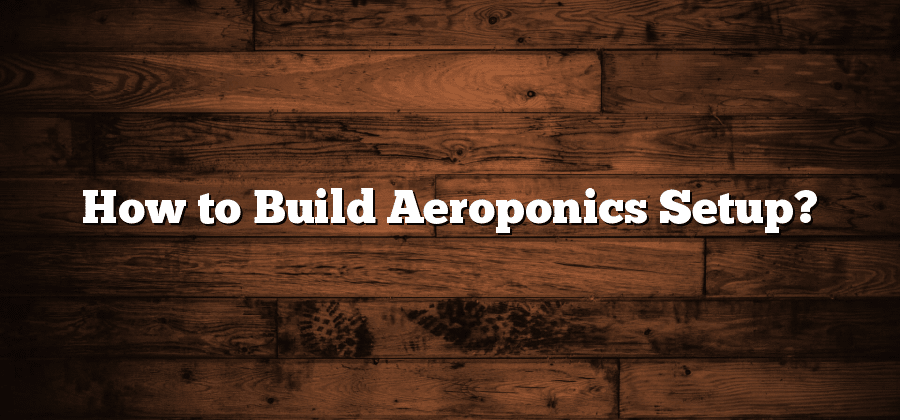Benefits of Aeroponics Systems
Aeroponics systems offer several benefits that make them an attractive option for both commercial and home gardeners. One of the key advantages is the efficient use of water. In traditional soil-based gardening, a significant amount of water is lost through evaporation and runoff. With aeroponics, water is continuously sprayed onto the plant roots, minimizing water waste. This not only conserves water resources but also reduces the overall cost of irrigation.
Another benefit of aeroponics systems is their ability to promote faster plant growth and larger yields. The misting of nutrient-rich water directly onto the roots provides plants with optimal levels of oxygen and nutrients. This results in accelerated growth rates and healthier plants. Additionally, because the plant roots are suspended in air, they can access more oxygen, which has been shown to enhance root development and nutrient absorption. Overall, aeroponics systems offer a highly efficient and productive method of growing plants that can significantly increase crop yields.
Understanding the Basics of Aeroponics
Aeroponics is a highly efficient method of growing plants without the need for soil. Instead, plants are suspended in air and nutrients are delivered directly to the roots through a fine mist. This allows for greater oxygenation and nutrient absorption, resulting in faster growth and higher yields.
In aeroponics systems, plants are typically grown in net pots or foam discs, with their roots exposed to the air. A nutrient solution is then sprayed onto the roots at regular intervals, ensuring they receive the necessary water and nutrients. This method not only conserves water, but also reduces the risk of diseases and pests commonly associated with soil-based growing methods. Additionally, the ability to control the nutrient solution precisely allows for optimal nutrient uptake by the plants, resulting in healthier and more productive crops.
Choosing the Right Location for Your Aeroponics Setup
When setting up an aeroponics system, the location plays a crucial role in its overall success. It is imperative to choose a spot that provides the ideal conditions for plant growth and ensures efficient nutrient uptake. One of the primary considerations is access to sunlight. Locate your aeroponics setup in an area that receives ample direct sunlight for at least 6-8 hours a day. This will allow your plants to photosynthesize and thrive. Additionally, ensure there are no obstructions, such as tall buildings or trees, that might cast shadows and reduce sunlight exposure for your plants.
Another important factor to consider when selecting a location for your aeroponics setup is temperature control. Extreme temperature fluctuations can negatively impact plant health and growth. Therefore, it’s recommended to choose a spot that offers a stable and moderate temperature throughout the day. Avoid placing your system in areas prone to excessive heat or cold, such as near heaters, air conditioners, or windows with direct exposure to the elements. By ensuring a consistent temperature range, you can provide an optimal environment for your plants to flourish.
Essential Components for an Aeroponics System
One of the key aspects of setting up an efficient aeroponics system is having the right components in place. These components are essential for creating the ideal environment for plants to thrive and grow. First and foremost, you will need a reservoir to hold the nutrient solution that will be misted onto the plant roots. This reservoir should be appropriately sized to accommodate the number of plants you plan to grow. Additionally, it should be made of a durable material that is resistant to corrosion and UV damage.
Next, you will need a misting system that will effectively deliver the nutrient solution to the plant roots. This system typically consists of misting nozzles or sprayers that evenly disperse the solution in the growing chamber. It is important to choose high-quality misting components to ensure a consistent and efficient distribution of the nutrient solution.
Another essential component for an aeroponics system is a pump that will circulate the nutrient solution from the reservoir to the misting system. The pump should have sufficient power to deliver the solution at the desired pressure and flow rate. It is recommended to choose a pump that is specifically designed for hydroponic or aeroponic systems to ensure compatibility and reliable performance.
In addition to these primary components, other essentials include a timer to control the misting cycles, a pH testing kit to monitor and adjust the acidity of the nutrient solution, and a thermometer to keep track of the temperature in the growing chamber. These components, when properly selected and integrated, will form the foundation of a successful aeroponics system. Stay tuned for our step-by-step guide on constructing the aeroponics setup, which will provide detailed instructions on how to assemble all these components for optimal functionality and plant growth.
Step-by-Step Guide to Constructing the Aeroponics Setup
Step 1: Designing the System
The first step in constructing your aeroponics setup is to design the system. Begin by determining the size and scale of the system you wish to build, taking into consideration the space you have available and your specific needs and goals. Consider factors such as the number of plants you want to grow, the type of plants, and your budget. Once you have a clear vision of your system, create a detailed design plan that includes the layout, dimensions, and materials needed.
Step 2: Gathering the Materials
After finalizing your design plan, the next step is to gather all the necessary materials. Start by making a list of everything you will need, including grow trays, nutrient solution reservoir, air pump, tubing, misting nozzles, and growing medium. It is crucial to choose high-quality materials that are durable and specifically designed for aeroponic systems. Consider the size and strength of the materials in relation to the scale of your design, ensuring that they can support the weight of the plants and withstand any potential stresses. Once you have gathered all the materials, double-check your list to ensure you have everything before proceeding to the next step.






